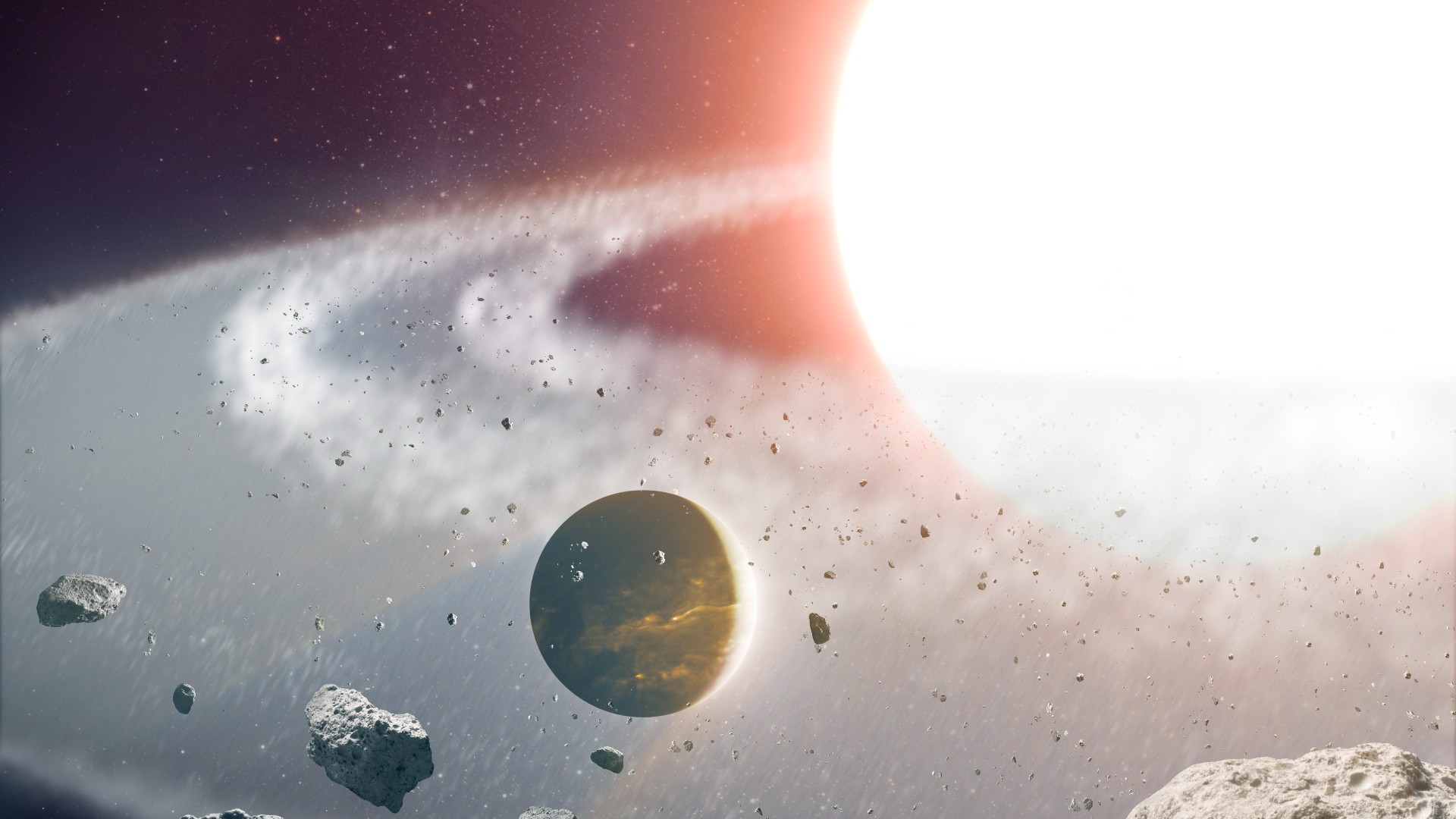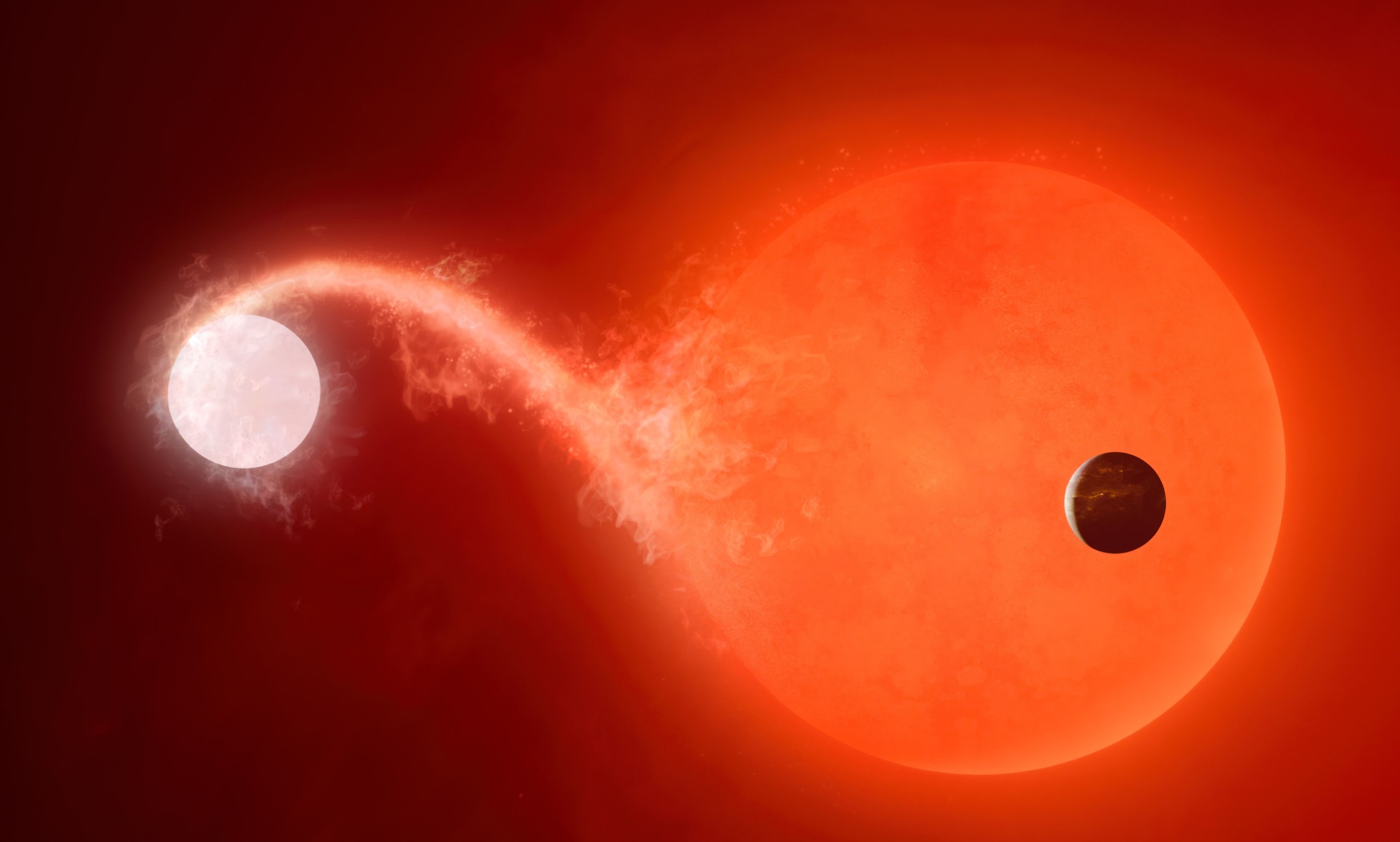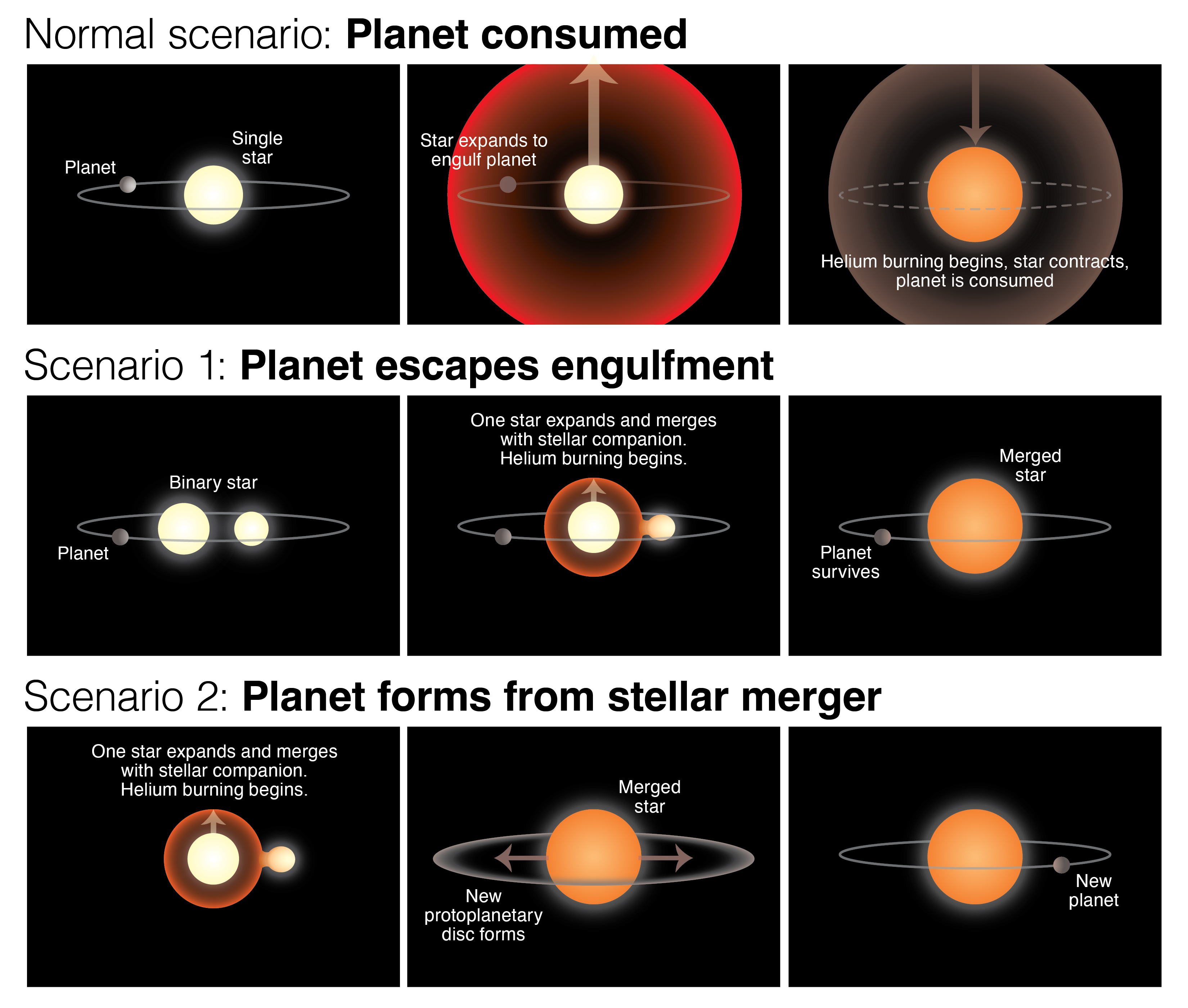'Forbidden planet' narrowly escaped becoming a snack for a dying star (video)
The discovery of the giant planet Halla suggests that planets close to their stars can survive the rapid expansion seen as they enter their end-of-life red giant phase.
Astronomers have discovered a "forbidden planet" orbiting so close to a red giant star it should have been destroyed.
The giant exoplanet, which has 1.7 times the mass of Jupiter, was discovered when NASA's Transiting Survey Satellite (TESS) observed its parent red giant star for six months between July 2019 and June 2020 and for another six months between June 2021 and June 2022 spotting a characteristic wobble caused by an orbiting planet.
The discovery of the giant planet, designated 8 Ursae Minoris b or Halla, orbiting the red giant star Baekdu at a distance of 46 million miles, around half the distance between Earth and the sun, indicates some worlds may survive the death throes that create these puffed-out stellar bodies. Thus far, a lack of planets located at such relatively close orbits around this class of star has implied to astronomers that planets do not survive the process that transforms stars like the sun into red giants.
"This is the first system that we know of in which a planet survives so closely around a star burning helium in its core. The core-helium burning phase is a stage that stars reach only after they've swelled up and consumed nearby planets," research lead author and University of Hawai'i astronomer Marc Hon told Space.com via email. "Death by star, particularly when the star first expands into a red giant, is not the end for all close planets! In other words, we have here essentially a 'forbidden planet,' namely one that has seemingly survived imminent destruction from its once expanding host star. In other words, this planet should not exist today!"
Related: Red giant stars: Facts, definition & the future of the sun
In around 5 billion years, our sun will run out of hydrogen in its core. This gas serves as the fuel for nuclear fusion, the process that supplies the outward pressure needed to protect it against collapse caused by the inward push of its own gravity. As the sun's core collapses, its outer layers, where nuclear fusion still proceeds, will swell out. This will result in our star expanding out to around the orbit of Mars, engulfing the inner planets of our solar system, including Earth.
For Baekdu, which currently fuses helium into heavier elements at its core, the predicted pathway to the red giant phase should have seen it swell out to around 65 million miles (105 million km) wide. This prompted the researchers to theorize how a planet can now exist around Baekdu at a distance of around 46 million miles (74 million km), where it can complete an orbit in just 94 Earth days.
Breaking space news, the latest updates on rocket launches, skywatching events and more!
"What's surprising is that the continued existence of this planet implies a variety of pathways over which planets can survive the volatile evolution of their host stars," Hon explained.
How to survive death by red giant
Objects orbiting stars as they enter the red giant phase have previously been discovered to survive being engulfed as a result of this transformation, but these have so far been brown dwarfs, objects with masses greater than gas giant planets but not quite great enough to initiate nuclear fusion and become a star themselves. Despite being more massive than any planet in the solar system, Halla still isn't massive enough to have survived being engulfed through its size alone.
The team behind this research was also able to rule out the possibility that Halla formed further out from its star and then moved into a closer, near-circular orbit. This is because the helium-burning phase of stars like this is very short-lived (cosmically speaking), lasting just around 100 million years. The planet would have had to have moved into place after this phase started, but it would have taken billions of years for its orbit to settle into a near-perfect circle.
Another possible survival mechanism is the chance that something may have changed the traditional evolution of Baekdu into a red giant star, possibly a merger with a white dwarf binary partner. White dwarfs are born after the red giant phase when the puffed-out outer material disperses and leaves a cooling stellar core called a white dwarf.
Mergers between white dwarfs and proto-red giants have previously been thought to ignite helium and result in the early termination of the red giant's expansion; meaning if this was the case, the outer edge of the star would have never reached Halla. This would provide the exoplanet with a temporary stay of execution only, however. Once the helium ceases burning, Baekdu will once again swell out.
There is some evidence that this is the case with Baekdu, as the outer layers of the star seem to be overly rich in the element lithium, something that is characteristic of white dwarf/red giant mergers.
Another suggestion is that Halla wasn't around when Baekdu was transforming into a red giant. The authors suggest that the exoplanet could be a second-generation planet created from material that was pulled out from the dying star by the gravitational influence of a binary companion before both stars merged.
Such an event would form a disk of material around the red giant star similar to the protoplanetary disks that surround young stars in infant planetary systems from which planets can be born.
"The fact that planets are appearing where we really don't expect them to show up is telling us that planet formation may be surprisingly resilient," Hon added.
Whatever the mechanism that led to the survival of this close-in planet to its red giant star, the authors conclude that this system shows that red giants burning helium in their cores can harbor planets close by. The findings also provide evidence for the role of "non-canonical," or non-traditional star evolution in the extended survival of late-stage exoplanetary systems.
Hon said that the team now intends to investigate how inevitable "death-by-star" actually is for planets close to young red giants.
"There aren't that many of these stars that have been searched simply because they shouldn't have planets. We want to know if there are more of these 'engulfment-escaping' surviving planets," Hon concluded. "There is marvelous synergy between space and ground telescopes that are now allowing us to study many red giants in great detail, including those known to host close planets. From there, we can better learn which ones are still facing impending death-by-star and which ones may have escaped this fate."
The research is published in the June 28 edition of the journal Nature.

Robert Lea is a science journalist in the U.K. whose articles have been published in Physics World, New Scientist, Astronomy Magazine, All About Space, Newsweek and ZME Science. He also writes about science communication for Elsevier and the European Journal of Physics. Rob holds a bachelor of science degree in physics and astronomy from the U.K.’s Open University. Follow him on Twitter @sciencef1rst.



